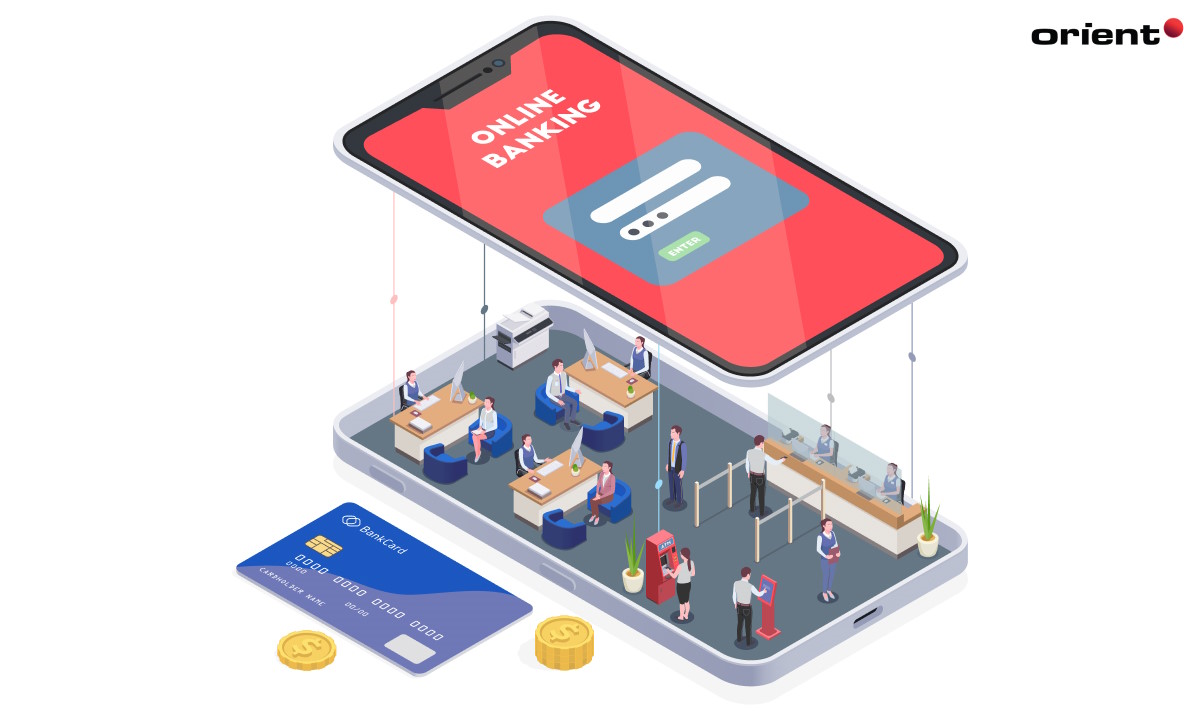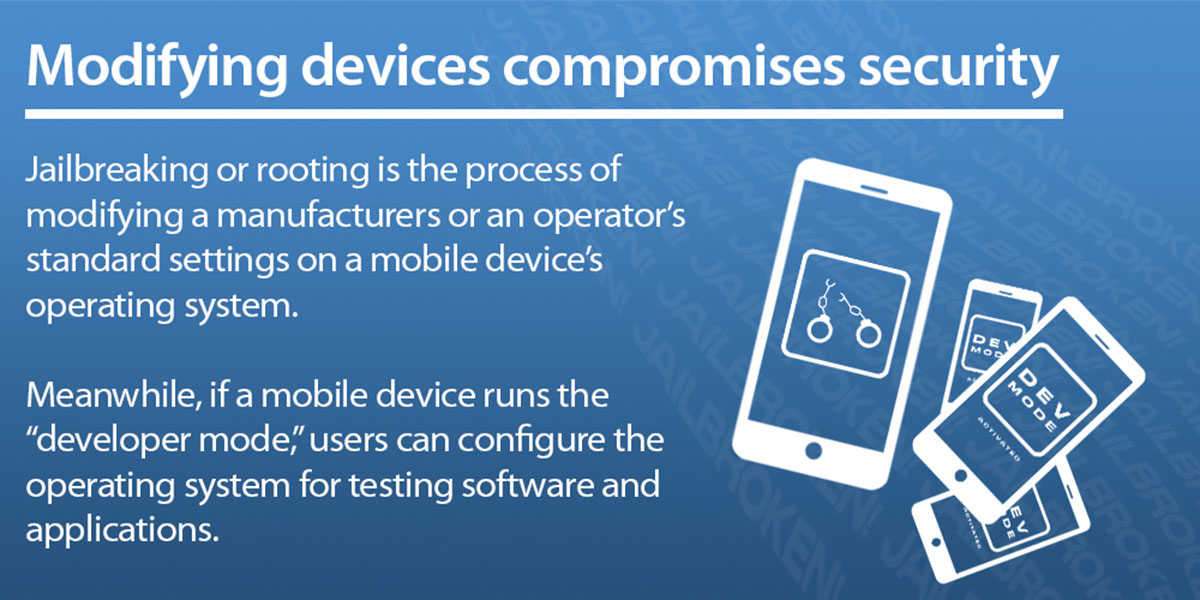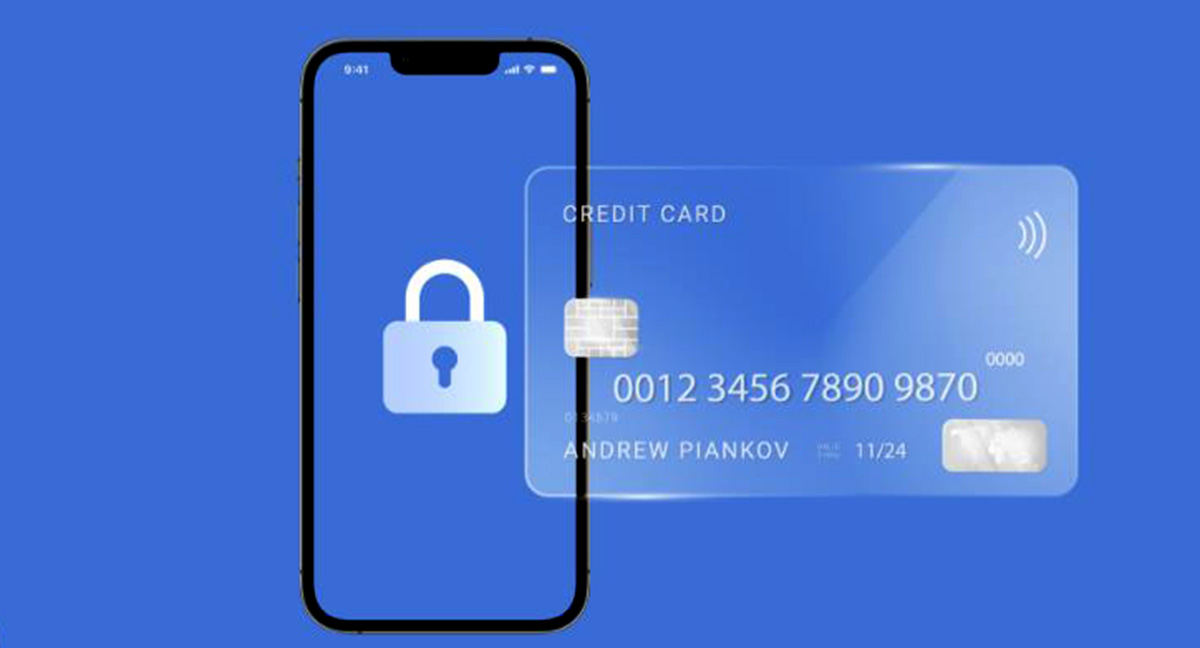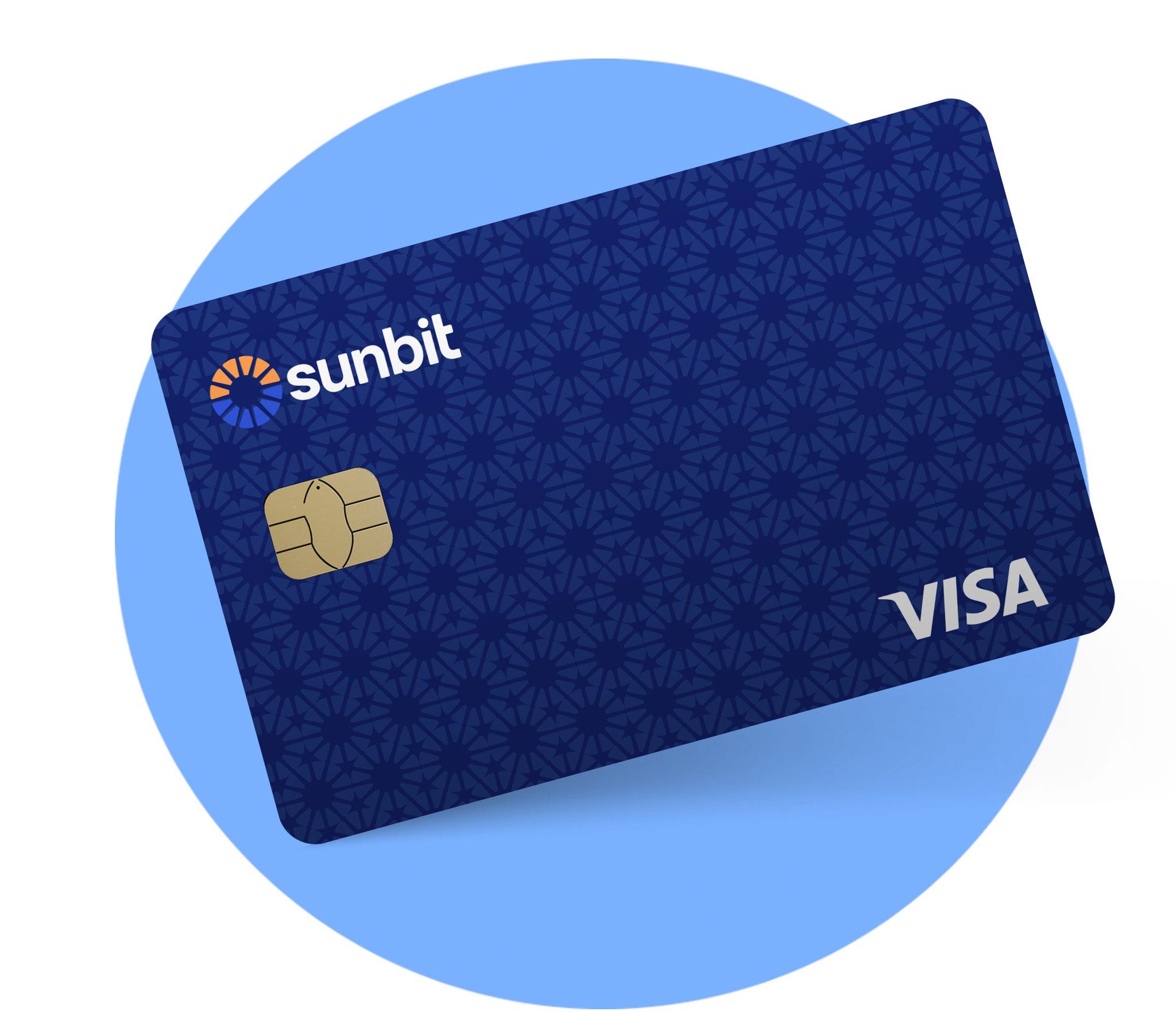Home>Finance>How Is Mobile Banking Different From Online Banking?


Finance
How Is Mobile Banking Different From Online Banking?
Modified: December 30, 2023
Discover the key differences between mobile banking and online banking and how they impact your finance management. Stay in control anytime, anywhere!
(Many of the links in this article redirect to a specific reviewed product. Your purchase of these products through affiliate links helps to generate commission for LiveWell, at no extra cost. Learn more)
Table of Contents
- Introduction
- Definition of Mobile Banking
- Definition of Online Banking
- Comparison of Mobile Banking and Online Banking
- Accessibility and Convenience
- Security Measures
- Features and Functionality
- User Experience
- Differences in Banking Platforms
- Advantages of Mobile Banking over Online Banking
- Advantages of Online Banking over Mobile Banking
- Challenges and Limitations of Mobile Banking
- Challenges and Limitations of Online Banking
- Future Trends in Mobile Banking
- Conclusion
Introduction
In today’s digital age, banking has become more convenient and accessible than ever before. With the advent of technology, traditional brick-and-mortar banking institutions have embraced the world of online and mobile banking. These innovative solutions offer customers the ability to manage their finances anytime, anywhere, using their smartphones or computers.
In this article, we will delve into the differences between mobile banking and online banking, two popular methods of conducting financial transactions. We will explore the unique features, advantages, and limitations of each, shedding light on how these platforms have transformed the banking industry and revolutionized the way we manage our money.
Mobile banking refers to the use of a smartphone or tablet to access and manage banking services. Users can download a mobile banking app provided by their financial institution or access the mobile banking website through their device’s browser. Online banking, on the other hand, involves accessing banking services through a computer or laptop using the internet.
So, how do these two banking methods differ? And how do they cater to the evolving needs and preferences of modern consumers? Let’s explore and compare the accessibility, security measures, features, user experience, and limitations of both mobile banking and online banking.
Definition of Mobile Banking
Mobile banking is a form of banking that allows individuals to conduct a wide range of financial transactions using their smartphones or tablets. It provides users with the flexibility to perform various banking activities at their convenience, without the need to visit a physical bank branch.
With mobile banking, users can access their bank accounts, view transaction history, transfer funds, pay bills, deposit checks, and even apply for loans or credit cards. These services are typically offered through a dedicated mobile banking app provided by the user’s financial institution.
Mobile banking apps are designed to be user-friendly and intuitive, providing a seamless and secure banking experience. They are equipped with features such as fingerprint or facial recognition login, two-factor authentication, and encryption of sensitive data to ensure the safety and privacy of users’ financial information.
One of the key advantages of mobile banking is its convenience and accessibility. Users can manage their finances on the go, at any time and from anywhere, as long as they have an internet connection. Whether it’s checking account balances while waiting in line, transferring funds between accounts during a lunch break, or paying bills from the comfort of home, mobile banking offers unprecedented flexibility.
Furthermore, mobile banking also allows users to receive real-time notifications and alerts about their account activity. They can stay informed about incoming deposits, outgoing payments, and any suspicious or fraudulent transactions, providing an added layer of security and control over their finances.
Overall, mobile banking has transformed the way we interact with our banks and manage our money. It offers a convenient, fast, and secure means of conducting financial transactions, empowering individuals to take control of their finances on their own terms.
Definition of Online Banking
Online banking, also known as internet banking or web banking, refers to the use of a computer or laptop to access and manage banking services through the internet. It allows individuals to perform various financial activities without the need to physically visit a bank branch.
Through online banking, users can access their bank accounts, check balances, view transaction history, transfer funds, make bill payments, and manage investments. These services are typically provided through the financial institution’s website, where users can log in securely using their personal login credentials.
Online banking platforms are designed to provide a comprehensive and user-friendly interface that allows customers to navigate through different banking services easily. They often offer features such as customizable dashboards, budgeting tools, and the ability to set up automatic payments or recurring transfers.
The security of online banking is a top priority for financial institutions. They employ advanced security measures such as robust encryption techniques, secure socket layer (SSL) technology, and multi-factor authentication to protect sensitive customer data and prevent unauthorized access.
One of the primary advantages of online banking is its convenience. Users can perform banking transactions at their convenience, without having to adhere to traditional banking hours. Whether it’s early in the morning or late at night, individuals can access their accounts and manage their finances from the comfort of their own homes.
Online banking also provides users with quick access to their financial information. They can instantly view balances, track spending, and monitor transactions in real-time. This level of visibility empowers individuals to make informed financial decisions and stay on top of their financial goals.
Furthermore, online banking allows users to access additional financial services and resources. They can apply for loans or credit cards, open new accounts, access financial reports and statements, and even seek financial advice through online banking platforms.
In summary, online banking has revolutionized the banking industry by providing customers with a convenient and secure method to manage their finances. It offers a wide range of services, access to real-time information, and the flexibility to conduct banking transactions anytime, anywhere.
Comparison of Mobile Banking and Online Banking
While both mobile banking and online banking provide convenient ways to access and manage banking services, there are several key differences between the two platforms. Understanding these differences can help users choose the method that best suits their needs and preferences. Let’s compare mobile banking and online banking across different aspects:
Accessibility and Convenience:
Mobile banking takes convenience to another level. Users can access their bank accounts anytime, anywhere, as long as they have a smartphone or tablet with an internet connection. This means they can perform transactions on the go, making it ideal for those who are constantly on the move. Online banking, on the other hand, requires access to a computer or laptop, making it slightly less convenient, as users need to be in front of their devices to access their accounts.
Security Measures:
Both mobile banking and online banking put a strong emphasis on security. They incorporate measures such as encryption, secure login credentials, and two-factor authentication to protect users’ financial information. However, mobile banking apps often come with additional security features such as biometric authentication (fingerprint or facial recognition), providing an extra layer of security compared to online banking.
Features and Functionality:
Mobile banking apps tend to offer a more comprehensive range of features compared to online banking platforms. They often include features such as mobile check deposit, card controls (such as locking or unlocking cards), and instant person-to-person payments. Online banking platforms, while providing core banking functionalities, may not offer all the advanced features available through mobile banking apps.
User Experience:
Mobile banking apps are specifically designed for smaller screens and touch-based interactions, providing a more intuitive and user-friendly experience. The user interface of mobile apps is optimized for mobile devices, making navigation and transaction execution seamless. Online banking, while still user-friendly, may require a bit more effort to navigate through the website and complete tasks on a larger screen.
Differences in Banking Platforms:
Mobile banking is typically offered by banks and financial institutions as a standalone app or a mobile-optimized website. Online banking, on the other hand, is usually accessed through the financial institution’s website using a computer or laptop. This distinction in platforms means that the features and user experience may vary slightly between the two.
Advantages of Mobile Banking over Online Banking:
- Greater convenience and accessibility
- Enhanced security features
- Advanced functionalities such as mobile check deposit and card controls
- Intuitive user experience for mobile devices
Advantages of Online Banking over Mobile Banking:
- Greater screen real estate for viewing and managing finances
- Access to additional financial resources and services
- Possibility for a more comprehensive banking experience
Understanding the differences and advantages of mobile banking and online banking can help users make an informed choice based on their individual preferences and needs. Both platforms provide convenient and efficient ways to manage finances, ultimately offering flexibility and control over one’s financial well-being.
Accessibility and Convenience
When it comes to accessibility and convenience, mobile banking takes the lead. With a mobile banking app installed on their smartphones or tablets, users have the freedom to manage their finances on the go, anytime and anywhere. Whether they are traveling, waiting in line, or simply relaxing at home, mobile banking allows individuals to access their bank accounts and conduct transactions with a few taps on their mobile devices.
With mobile banking, there is no longer a need to visit a physical bank branch during business hours. Users can check their account balances, transfer funds, pay bills, and even deposit checks using the camera on their mobile devices. Mobile banking apps provide a seamless and user-friendly interface that makes transactions quick and hassle-free.
In contrast, online banking requires a computer or laptop with an internet connection. While it still offers a level of convenience, users are limited to accessing their accounts from their home or office. This means they need to be in front of their computer to manage their finances. While online banking provides flexibility in terms of time, it lacks the mobility and convenience that mobile banking offers.
Mobile banking takes advantage of the increasing prevalence of smartphones and the advancements in mobile technology. With the majority of people carrying their smartphones with them at all times, mobile banking ensures that users have access to their financial information and can initiate transactions whenever they need to. This level of accessibility has transformed the traditional banking experience and made it more convenient for individuals to manage their finances.
In addition, mobile banking apps often provide features that enhance convenience further. For example, users can set up account alerts and notifications to stay informed about important account activities. They can receive real-time updates about account balances, deposits, withdrawals, or unusual transactions, keeping them in control of their finances and allowing them to take immediate action if needed.
Moreover, mobile banking apps often offer features such as biometric authentication using fingerprints or facial recognition, reducing the need for remembering complex passwords. This not only saves time but also ensures the security of the user’s financial information.
Overall, the accessibility and convenience provided by mobile banking surpass traditional online banking. Mobile banking enables users to access their accounts and perform a wide range of transactions from anywhere at any time, giving them the freedom to manage their finances effortlessly and on their own terms.
Security Measures
Both mobile banking and online banking platforms are committed to ensuring the security and protection of users’ financial information. They implement various security measures to safeguard against unauthorized access and fraudulent activities. However, mobile banking apps often offer additional security features due to the inherent risks associated with mobile devices.
Mobile banking apps prioritize the security of user data by employing several measures. One commonly used security measure is encryption, which protects sensitive information during transmission. Mobile banking apps use secure socket layer (SSL) technology to encrypt data, ensuring that it cannot be intercepted or deciphered by unauthorized parties.
Another key security feature offered by mobile banking apps is biometric authentication, such as fingerprint or facial recognition. This adds an extra layer of security, ensuring that only authorized users can access their accounts. Biometric data is stored securely on the device, further protecting it from potential security breaches.
Mobile banking apps are also designed with two-factor authentication (2FA) capabilities. This involves the use of a unique verification code sent to the user’s mobile device, which must be entered along with the regular login credentials. This additional authentication step provides an added level of security, reducing the risk of unauthorized access even if login credentials are compromised.
While mobile banking apps have implemented robust security measures, online banking platforms also prioritize the protection of users’ financial data. They typically use encryption technology to protect data during transmission, similar to mobile banking apps.
In addition to encryption, online banking platforms often employ a combination of username and password authentication as the primary security measure. Users are required to create strong passwords and are encouraged to change them regularly to prevent unauthorized access to their accounts. Many online banking platforms also provide multi-factor authentication (MFA) options, which require users to enter a unique verification code sent to their registered mobile phone or email address.
Financial institutions also closely monitor account activity for any suspicious or fraudulent transactions. They employ sophisticated fraud detection systems that use machine learning algorithms to analyze transaction patterns and identify any unusual activities. In case of a suspected fraudulent transaction, banks may temporarily freeze the account and contact the account holder for verification before proceeding.
It’s important to note that both mobile banking and online banking security measures are constantly evolving to stay ahead of emerging threats. Banks and financial institutions work diligently to update their security protocols and regularly educate users about best practices to protect their financial information.
Ultimately, both mobile banking and online banking platforms are committed to providing a secure banking experience. While mobile banking apps offer additional security features such as biometric authentication, users can rest assured that their financial transactions and sensitive information are protected on both platforms.
Features and Functionality
Both mobile banking and online banking platforms offer a range of features and functionalities designed to enhance the banking experience for users. While there may be some overlap, each platform has its own unique set of features that cater to the evolving needs of modern consumers.
Mobile banking apps typically offer a comprehensive range of features that leverage the capabilities of smartphones and tablets. These features include:
- Account Management: Users can view account balances, transaction history, and account details in real-time. They can also manage multiple accounts from a single interface.
- Funds Transfer: Mobile banking apps allow users to transfer funds between their own accounts or to other accounts within the same financial institution.
- Bill Payments: Users can pay bills directly through the app, eliminating the need for manual checks or trips to payment centers.
- Mobile Check Deposit: Users can deposit checks by simply capturing an image using their device’s camera. This feature saves time and eliminates the need to visit a physical branch.
- Card Controls: Many mobile banking apps offer the ability to manage debit and credit cards, including options to temporarily block or unblock cards, set spending limits, and receive real-time notifications for card transactions.
- Person-to-Person Payments: Users can easily send money to friends and family using mobile banking apps, often through payment services like Venmo or Zelle.
Online banking platforms also provide a range of features and functionalities that facilitate financial management. These features typically include:
- Account Overview: Users can access detailed information about their accounts, including balances, transaction history, and statements.
- Money Transfers: Online banking platforms allow users to transfer funds between their own accounts or to other accounts within the same financial institution.
- Bill Pay: Users can set up and schedule payments for various bills, such as utilities, rent, and credit cards.
- Investment Management: Many online banking platforms offer the ability to manage investment portfolios, including buying and selling securities and accessing investment research tools.
- Loan Management: Users can apply for loans, track existing loans, and make loan payments through online banking platforms.
- Financial Planning Tools: Some online banking platforms provide budgeting tools, saving goals trackers, and financial planning resources to help users manage their finances effectively.
Both mobile banking and online banking platforms are continually evolving, with financial institutions frequently introducing new features and functionalities to meet the changing needs of their customers. This includes integration with emerging technologies such as artificial intelligence (AI), voice assistants, and chatbots to provide personalized financial insights and improve the overall user experience.
It’s important to note that the availability of specific features and functionalities may vary depending on the financial institution and the specific mobile banking or online banking platform being used. Users are encouraged to explore the features offered by their respective banks to take full advantage of the available tools and resources.
In summary, mobile banking and online banking platforms offer a wide range of features and functionalities that enable users to manage their finances efficiently. Whether it’s performing transactions, managing accounts, or accessing financial planning tools, these platforms provide users with the flexibility and convenience they need to stay in control of their financial well-being.
User Experience
User experience plays a crucial role in determining the satisfaction and ease-of-use of both mobile banking and online banking platforms. While both platforms aim to provide a seamless banking experience, there are certain differences in the user experience that are worth considering.
Mobile banking apps are specifically designed to optimize the user experience for smartphones and tablets. The interface is typically intuitive, with straightforward navigation and touch-friendly controls. Mobile apps often feature clean and user-friendly designs, making it easy for users to find the information or perform the desired transactions efficiently.
Mobile banking apps prioritize convenience and efficiency by providing quick access to key features and functionalities. Users can usually access their account balances and recent transactions with just a glance, as they are prominently displayed on the app’s home screen. This instant visibility allows for a seamless user experience and enables users to stay updated on their finances with minimal effort.
Furthermore, mobile banking apps often leverage push notifications to keep users informed about important account activities. They can receive real-time alerts for events such as new transactions, low balances, due payments, or potential fraudulent activities. These notifications serve to enhance the user experience by providing timely and relevant information, allowing users to take immediate action whenever necessary.
On the other hand, online banking platforms are accessed through web browsers on computers or laptops. While they may not offer the same level of mobility as mobile banking apps, online banking platforms provide users with a broader view of their financial information. With larger screen real estate, users can view more transaction details at once, making it easier to analyze and track their finances.
Online banking platforms often provide customizable dashboards, allowing users to personalize their experience by prioritizing the information and functionalities that are most valuable to them. Users can often rearrange and customize widgets, enabling them to create a layout that best fits their needs and preferences.
Both mobile banking apps and online banking platforms strive to offer secure and seamless experiences. They employ features such as remember me, which enables users to securely save their login credentials for quick access without compromising security.
In summary, mobile banking apps prioritize mobile-friendly interfaces and quick access to essential features, enhancing convenience and efficiency. Online banking platforms, on the other hand, provide a broader view of financial information and offer customizable dashboards to personalize the user experience. Ultimately, the choice between mobile banking and online banking comes down to individual preferences regarding the accessibility, convenience, and interface that best suits the user’s banking needs.
Differences in Banking Platforms
Mobile banking and online banking not only differ in terms of accessibility and convenience but also in the underlying banking platforms they utilize.
Mobile banking is typically offered as a standalone app that users can download and install on their smartphones or tablets. These apps provide a dedicated interface designed specifically for mobile devices, optimized for touch-based interactions and smaller screens. Mobile banking apps offer a seamless and user-friendly experience, allowing users to access their accounts, perform transactions, and access various banking features with ease.
On the other hand, online banking is accessed through a web browser on a computer or laptop. Users log in to their online banking account using their login credentials, usually provided by the financial institution. Online banking platforms offer a broader view of account information, transaction history, and banking services. Users navigate through a web-based interface that may be less optimized for mobile devices but provides a comprehensive range of features.
One key difference between the two platforms is the screen real estate available for viewing and managing finances. Mobile banking apps are tailored for smaller screens, which can be ideal for quick and on-the-go banking activities. On the other hand, online banking platforms offer a larger display area, allowing users to view more detailed information at once, making it easier to analyze their finances and track transactions.
Another difference lies in the layout and customization options. Mobile banking apps often offer a more streamlined and simplified interface, presenting users with only the most essential features and functions. Online banking platforms, on the other hand, provide more customization options, allowing users to personalize their experience by arranging widgets or selecting desired layouts based on their preferences.
The integration of advanced features may also differ between the two platforms. Mobile banking apps often include features such as mobile check deposit, card controls, and person-to-person payments, taking full advantage of the capabilities of mobile devices. Online banking platforms, while still providing core banking functionalities, may have a wider range of additional financial services and investment management tools.
Ultimately, the choice between mobile banking and online banking platforms depends on individual preferences and needs. Mobile banking offers convenience and accessibility on the go, while online banking provides a comprehensive view of financial information and additional banking services. Understanding the differences in the underlying platforms can help users make an informed decision based on their preferred banking experience.
Advantages of Mobile Banking over Online Banking
Mobile banking offers several distinct advantages over online banking, leveraging the capabilities of smartphones and tablets to provide a convenient and flexible banking experience. Here are some key advantages of mobile banking:
1. Greater Convenience and Accessibility:
Mobile banking allows users to access their bank accounts and perform transactions anytime, anywhere, as long as they have their smartphone or tablet with them. This convenience enables users to manage their finances on the go, eliminating the need to visit a physical banking location or rely on a computer/laptop with internet access.
2. Enhanced Security Features:
Mobile banking apps often incorporate advanced security measures to protect users’ financial information. Biometric authentication, such as fingerprint or facial recognition, adds an extra layer of security by ensuring that only authorized individuals can access their accounts. Mobile devices also provide real-time notifications for account activities, allowing users to immediately detect and address any suspicious transactions or fraudulent activities.
3. Advanced Functionality:
Mobile banking apps offer a wide range of features that leverage the capabilities of smartphones and tablets. Users can perform tasks such as mobile check deposits, card controls (such as temporarily blocking or unblocking cards), and person-to-person payments with ease. These advanced functionalities provide users with greater control over their finances and streamline banking activities, saving time and effort.
4. Optimized User Experience:
Mobile banking apps are designed with a user-friendly and intuitive interface that is specifically tailored for mobile devices. The streamlined design and touch-based interactions offer a seamless and enjoyable user experience. The availability of push notifications and various customization options further enhance the user experience and empower users to personalize their banking interactions.
5. Instant Account Access:
With mobile banking, users can instantly access their account balances, transaction history, and other account details with just a few taps on their mobile devices. This real-time information enables users to stay updated on their financial status and make quick decisions regarding their money. It provides a level of convenience and immediacy that is not easily replicated with online banking on a computer or laptop.
In summary, mobile banking offers greater convenience, enhanced security features, advanced functionality, an optimized user experience, and instant access to account information. These advantages make it a popular choice for individuals who prioritize flexibility, ease of use, and on-the-go access to their banking needs.
Advantages of Online Banking over Mobile Banking
While mobile banking offers numerous advantages, there are also distinct benefits to using online banking platforms. Here are some key advantages of online banking over mobile banking:
1. Larger Screen Real Estate:
Online banking platforms are accessed through computers or laptops, providing users with a larger screen size compared to mobile devices. This extra screen real estate allows for a more comprehensive view of financial information, transaction details, and account statements. It can be particularly beneficial when analyzing complex financial data or reviewing multiple transactions simultaneously.
2. Additional Financial Services and Resources:
Online banking platforms often offer a wider range of financial services beyond basic banking transactions. Users can access features such as investment management tools, retirement planning calculators, and educational resources to enhance their overall financial well-being. These additional resources enable users to make informed financial decisions and access comprehensive financial planning assistance.
3. Enhanced Web-Based Functionality:
Online banking platforms have been developed over a longer period of time and have evolved with more sophisticated features and functionalities. They often provide a more comprehensive suite of options, including detailed transaction categorization, advanced search capabilities, and powerful financial analysis tools. These features enable users to dig deeper into their financial data and gain a more comprehensive understanding of their financial situation.
4. Multi-Tasking Capability:
Using online banking on a computer or laptop allows users to multi-task more effectively. They can simultaneously navigate banking platforms while accessing other applications or websites, making it easier to compare financial information, research investment opportunities, or compile documents. This multi-tasking capability can be particularly beneficial for those who need to manage complex financial portfolios or perform financial analysis alongside their banking activities.
5. Customizability and Personalization:
Online banking platforms often offer more customization options compared to mobile banking apps. Users can personalize their dashboard layout, prioritize information widgets, and set preferences based on their needs and preferences. This flexibility allows users to create a customized online banking experience that aligns with their unique financial goals and priorities.
In summary, online banking offers advantages such as larger screen real estate, access to additional financial services and resources, enhanced web-based functionality, multi-tasking capability, and increased customizability. These features make online banking a preferred choice for individuals who value in-depth financial analysis, access to a wider range of services, and the ability to personalize their banking experience.
Challenges and Limitations of Mobile Banking
While mobile banking has revolutionized the way we manage our finances, it also comes with its own set of challenges and limitations. Here are some key factors to consider:
1. Device and Connectivity Limitations:
One of the main challenges of mobile banking is the dependence on smartphones or tablets and their associated limitations. Older devices may not be compatible with the latest mobile banking apps, which can restrict access to certain features or even prevent users from using mobile banking altogether. Additionally, mobile banking relies heavily on stable internet connectivity, and poor signal strength or lack of Wi-Fi access can hinder functionality and lead to disruptions in service.
2. Security Concerns and Vulnerabilities:
While mobile banking apps incorporate robust security measures, the risk of cybersecurity threats and attacks still exists. Mobile devices can be susceptible to malware, phishing attempts, or unauthorized access if they are lost, stolen, or compromised. Users must remain vigilant by keeping their devices and apps updated, using secure Wi-Fi networks, and adopting best practices for password management to mitigate the potential risks.
3. Limitations in Transaction Types and Amounts:
Mobile banking may have limitations in terms of the types and amounts of transactions that can be performed. Some transactions, such as large fund transfers or complex financial transactions, may require additional verification or cannot be processed through mobile banking apps. Additionally, certain financial services, such as opening new accounts or applying for complex loans, may not be available or may require interaction with a bank representative or visiting a physical branch.
4. User Interface and Navigation Challenges:
Mobile banking apps rely on smaller screens and touch-based interactions, which can pose challenges for users with visual impairments or difficulties with manual dexterity. The user interface and navigation may not be as intuitive or accessible for certain individuals, which can impact the overall user experience and usability of the app.
5. Limited In-Person Support:
Unlike traditional banking methods or even online banking, mobile banking may offer limited opportunities for in-person support. While customer support services are typically available via phone or online chat, some users may prefer the option to speak with a representative face-to-face for complex inquiries or issue resolution. This limitation can be a drawback for those who value direct personal interaction with bank staff.
It’s important for users to be aware of these challenges and limitations associated with mobile banking. By understanding the potential drawbacks, individuals can make informed decisions about their banking preferences and take necessary precautions to mitigate any associated risks.
Challenges and Limitations of Online Banking
While online banking offers tremendous advantages, it also comes with its own set of challenges and limitations that individuals should be aware of. Here are some key factors to consider:
1. Accessibility and Dependency on Internet Connectivity:
Online banking relies heavily on internet connectivity, and disruptions in service or a lack of stable internet access can hinder users’ ability to access their accounts and perform transactions. This can be a challenge for individuals in remote areas or locations with poor internet infrastructure. Furthermore, individuals who have limited or no access to computers or laptops may find it difficult to avail themselves of online banking services.
2. Security and Privacy Concerns:
While online banking platforms implement robust security measures, such as encryption and multi-factor authentication, there is always a persistence of cybersecurity threats. Phishing attacks, data breaches, malware, and hacking attempts pose potential risks to the security and privacy of users’ financial information. It is crucial for individuals to remain vigilant, adopt strong password practices, and regularly update their devices and software to mitigate these risks.
3. Learning Curve and Ease of Use:
Online banking may require users to familiarize themselves with the interface and navigation of the platform, which can pose a learning curve, especially for individuals who are less comfortable with technology or have limited digital literacy. The complexity of online banking functionality may be overwhelming for some users, which can hinder their overall experience and confidence in using online banking services.
4. Lack of Personalized Support:
Unlike traditional banking methods, online banking may have limited opportunities for face-to-face interaction or direct personalized support. While customer service may be available via phone, email, or live chat, some individuals may prefer in-person support for complex inquiries or issue resolution. This limitation can be frustrating for those who value personal interaction and reassurance from bank staff.
5. Transaction Limitations and Processes:
Online banking platforms may have limitations on the types and amounts of transactions that users can perform. Certain financial activities, such as opening specialized accounts, managing complex investments, or finalizing certain loan applications, may require additional verification or a visit to a physical branch. These limitations can create limitations in the services that can be fully utilized through online banking platforms.
It’s important for users to be aware of these challenges and limitations associated with online banking. By understanding these potential drawbacks, individuals can make informed decisions, adopt best practices for security, and utilize alternative banking methods when necessary to ensure their financial needs are effectively met.
Future Trends in Mobile Banking
The world of mobile banking is constantly evolving as technology advances and consumer demands change. Here are some future trends that are expected to shape the landscape of mobile banking:
1. Biometric Authentication:
Biometric authentication, such as fingerprint or facial recognition, is already widely used in mobile banking apps. However, this technology is expected to become even more prevalent in the future, offering users a more seamless and secure way to access their accounts. As biometric technology improves, it may also extend to voice recognition or even iris scanning, providing users with a variety of biometric options for authentication.
2. Artificial Intelligence (AI) and chatbots:
AI-powered virtual assistants and chatbots are likely to play a significant role in mobile banking. These AI-enabled tools can offer personalized financial advice, answer frequently asked questions, and assist with transactions in a conversational manner. As natural language processing improves, virtual assistants will become even more proficient at understanding and responding to user queries, delivering a more user-friendly and efficient customer experience.
3. Increased Focus on Personalization:
In order to meet the unique needs and preferences of individual users, mobile banking apps will likely offer more personalized features and services. Advanced data analytics will allow banks to gain insights into user behavior and provide tailored recommendations for financial products, budgeting tools, or investment opportunities. This personalized approach will enhance the user experience and foster stronger customer engagement.
4. Expanded Wallet and Payment Integration:
Mobile wallets and contactless payments are already widely used, but the integration of these features within mobile banking apps will likely continue to expand. Users will be able to seamlessly link their bank accounts or credit cards to their mobile wallets, making payments and managing finances more convenient. Additionally, mobile banking apps may integrate with other payment platforms to provide a unified and comprehensive digital payment experience.
5. Enhanced Security Measures:
As the threat landscape evolves, mobile banking apps will continually enhance their security measures to protect against evolving cybersecurity threats. This includes the implementation of advanced encryption techniques, biometric authentication, and continuous monitoring for suspicious activities. Financial institutions will also educate users about best practices for maintaining a secure mobile banking experience, such as regularly updating their apps and devices.
6. Integration with Internet of Things (IoT) Devices:
With the increased adoption of IoT devices, mobile banking apps may integrate with smart devices such as wearables, smart home assistants, and connected cars. This integration will enable users to manage their finances and make transactions using these devices, further enhancing the convenience and accessibility of mobile banking.
These future trends in mobile banking indicate a shift towards more personalized, secure, and convenient banking experiences. As technology continues to advance, mobile banking apps will adapt to meet the evolving needs and expectations of users, offering them enhanced features, functionalities, and a seamless digital banking experience.
Conclusion
Mobile banking and online banking have transformed the way we manage our finances, offering convenience, accessibility, and a host of features that cater to the evolving needs of modern consumers. Both platforms have distinct advantages and limitations, and understanding these differences is crucial in choosing the banking method that aligns with one’s preferences and lifestyle.
Mobile banking provides unparalleled convenience, allowing users to access their accounts and perform transactions anytime and anywhere through their smartphones or tablets. With advanced security measures, features such as biometric authentication, and intuitive user interfaces, mobile banking offers a seamless and user-friendly experience. However, challenges such as device limitations, security concerns, and transaction restrictions should be considered when opting for mobile banking.
On the other hand, online banking offers a comprehensive view of financial information, additional services, and a personalized banking experience. With larger screen real estate, multi-tasking capabilities, and customization options, online banking excels in providing detailed financial insights, investment management tools, and in-depth analysis. However, concerns related to accessibility, security, ease of use, and limited in-person support should be taken into account when relying solely on online banking.
Looking ahead, the future of mobile banking will be shaped by trends such as biometric authentication, artificial intelligence, increased personalization, enhanced security measures, expanded payment integration, and integration with IoT devices. These advancements aim to provide even greater convenience, security, and tailored experiences for mobile banking users.
In conclusion, mobile banking and online banking each offer unique benefits and challenges. It is important for individuals to evaluate their priorities and preferences, considering factors such as mobility, accessibility, functionality, and security when choosing their preferred banking method. Regardless of the chosen platform, both mobile banking and online banking provide accessible, efficient, and flexible ways to manage finances in this digital era.














